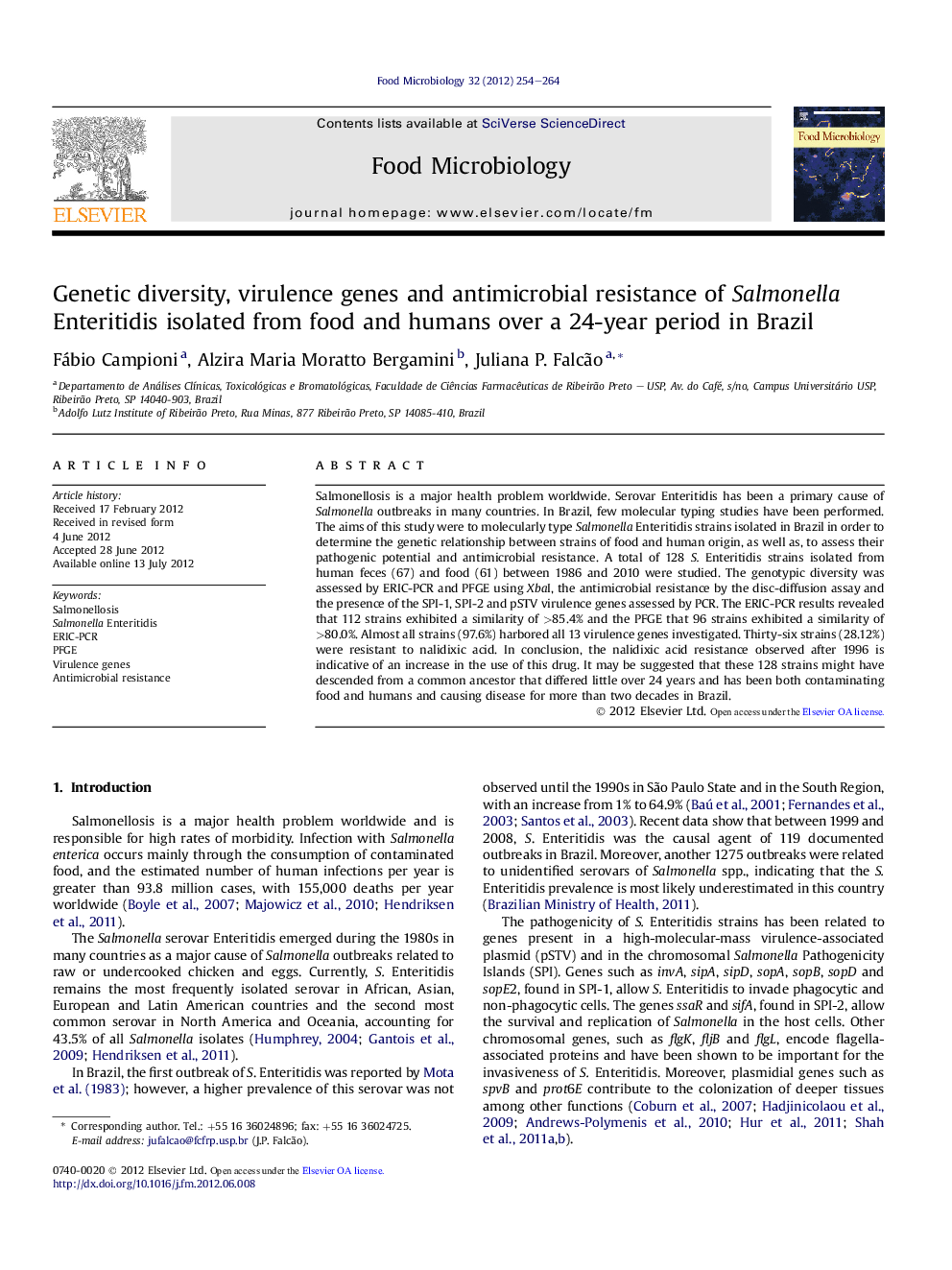| کد مقاله | کد نشریه | سال انتشار | مقاله انگلیسی | نسخه تمام متن |
|---|---|---|---|---|
| 6288974 | 1301537 | 2012 | 11 صفحه PDF | دانلود رایگان |

Salmonellosis is a major health problem worldwide. Serovar Enteritidis has been a primary cause of Salmonella outbreaks in many countries. In Brazil, few molecular typing studies have been performed. The aims of this study were to molecularly type Salmonella Enteritidis strains isolated in Brazil in order to determine the genetic relationship between strains of food and human origin, as well as, to assess their pathogenic potential and antimicrobial resistance. A total of 128 S. Enteritidis strains isolated from human feces (67) and food (61) between 1986 and 2010 were studied. The genotypic diversity was assessed by ERIC-PCR and PFGE using XbaI, the antimicrobial resistance by the disc-diffusion assay and the presence of the SPI-1, SPI-2 and pSTV virulence genes assessed by PCR. The ERIC-PCR results revealed that 112 strains exhibited a similarity of >85.4% and the PFGE that 96 strains exhibited a similarity of >80.0%. Almost all strains (97.6%) harbored all 13 virulence genes investigated. Thirty-six strains (28.12%) were resistant to nalidixic acid. In conclusion, the nalidixic acid resistance observed after 1996 is indicative of an increase in the use of this drug. It may be suggested that these 128 strains might have descended from a common ancestor that differed little over 24 years and has been both contaminating food and humans and causing disease for more than two decades in Brazil.
⺠Salmonella Enteritidis strains of human and food origin were molecularly characterized. ⺠The genetic relationship between food and human isolates was investigated. ⺠The strains presented a high genetic similarity and harbored the virulence markers. ⺠A cross contamination between food and human isolates was observed. ⺠The strains might descend from a common ancestor that differed little over 24 years.
Journal: Food Microbiology - Volume 32, Issue 2, December 2012, Pages 254-264